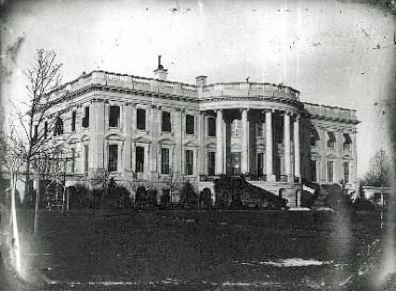June 29th, 2017
On this federal holiday, also known as Independence Day, marking the Colonies’ adoption of the Declaration of Independence on July 4, 1776, which declared independence from the Great Britain and its king, we thought it would be appropriate to share some fun facts about this historic day. We are already familiar with the fireworks, parades , barbeque and festivities like picnics, fairs, concerts and parties that take place on this day, but there are some things many people don’t know about the Fourth.
1. Congress made Independence Day an official unpaid holiday for federal employees in 1870. In 1938, Congress changed Independence Day to a paid federal holiday.
2. Only John Hancock actually signed the Declaration of Independence on July 4, 1776. All the others signed later.
3. The Declaration of Independence was signed by 56 men from 13 colonies.
4. The average age of the Signers of the Declaration of Independence was 45. The youngest was Thomas Lynch, Jr (27) of South Carolina. The oldest delegate was Benjamin Franklin (70) of Pennsylvania. The lead author of The Declaration, Thomas Jefferson, was 33.
5. One out of eight signers of the Declaration of Independence were educated at Harvard (7 total).
6. The only two signers of the Declaration of Independence who later served as President of the United States were John Adams and Thomas Jefferson.
7. The stars on the original American flag were in a circle so all the Colonies would appear equal.
8. The first Independence Day celebration took place in Philadelphia on July 8, 1776. This was also the day that the Declaration of Independence was first read in public after people were summoned by the ringing of the Liberty Bell.
9. The White House held its first 4th July party in 1801.
10. President John Adams, Thomas Jefferson and James Monroe all died on the Fourth. Adams and Jefferson (both signed the Declaration) died on the same day within hours of each other in 1826.
11. Benjamin Franklin proposed the turkey as the national bird but was overruled by John Adams and Thomas Jefferson, who recommended the bald eagle.
12. In 1776, there were 2.5 million people living in the new nation. Today the population of the U.S.A. is 316 million.
13. Fifty-nine places in the U.S. contain the word “liberty” in the name. Pennsylvania, with 11, has more of these places than any other state. Of the 59 places nationwide containing “liberty” in the name, four are counties: Liberty County, Ga. (65,471), Liberty County, Fla. (8,276), Liberty County, Mont. (2,392) and Liberty County, Texas (76,571).
14. The most common patriotic-sounding word used within place names is “union” with 136. Pennsylvania, with 33, has more of these places than any other state. Other words most commonly used in place names are Washington (127), Franklin (118), Jackson (96) and Lincoln (95).
15. Fireworks are part of the tradition of celebrating this national holiday. The U.S. imported $227.3 million worth of fireworks from China in 2012. U.S. exports of fireworks, by comparison, came to just $11.7 million in 2012, with Israel purchasing more than any other country ($2.5 million).
16. In 2012, vast majority of imported U.S. flags ($3.6 million) was made in China.
17. Barbecue is also big on Independence Day. Approximately 150 million hot dogs and 700 million pounds of chicken are consumed on this day.
18. Every 4th of July the Liberty Bell in Philadelphia is tapped (not actually rung) thirteen times in honor of the original thirteen colonies.
19. Traditions place the origins of “Yankee Doodle” as a pre-Revolutionary War song originally sung by British military officers to mock the disheveled, disorganized colonial “Yankees” with whom they served in the French and Indian War. It is believed that the tune comes from the nursery rhyme Lucy Locket. One version of the Yankee Doodle lyrics is “generally attributed” to Doctor Richard Shuckburgh,a British Army surgeon. According to one story, Shuckburgh wrote the song after seeing the appearance of Colonial troops under Colonel Thomas Fitch, V, the son of Connecticut Governor Thomas Fitch.[2]
20. The tune of the National Anthem was originally used by an English drinking song called “to Anacreon in Heaven.” The words have nothing to do with consumption of alcohol but the “melody that Francis Key had in mind when he wrote those words did originate decades earlier as the melody for a song praise of wine.” http://www.colonialmusic.org/Resource/Anacreon.htm
From everyone here at ACEI, we wish you and yours a safe and happy Independence Day!
Useful Links:
http://www.parkrideflyusa.com/blog/2012/07/04/20-fun-facts-about-the-4th-of-july/
http://www.archives.gov/exhibits/charters/declaration.html
http://www.census.gov/newsroom/releases/archives/facts_for_features_special_editions/cb13-ff14.html
http://www.cleveland.com/pdq/index.ssf/2011/07/fathoming_fun_facts_on_this_fe.html
http://interviewangel.com/17-fun-facts-about-the-fourth-of-july/
http://www.colonialmusic.org/Resource/Anacreon.htm
This was originally posted on July 3rd, 2013.
The Academic Credentials Evaluation Institute, Inc. (ACEI), was founded in 1994 and is based in Los Angeles, CA, USA. ACEI provides a number of services that include evaluations of international academic credentials for U.S. educational equivalence, translation, verification, and professional training programs. ACEI is a Charter and Endorsed Member of the Association of International Credential Evaluators. For more information, visit www.acei-global.org.





























